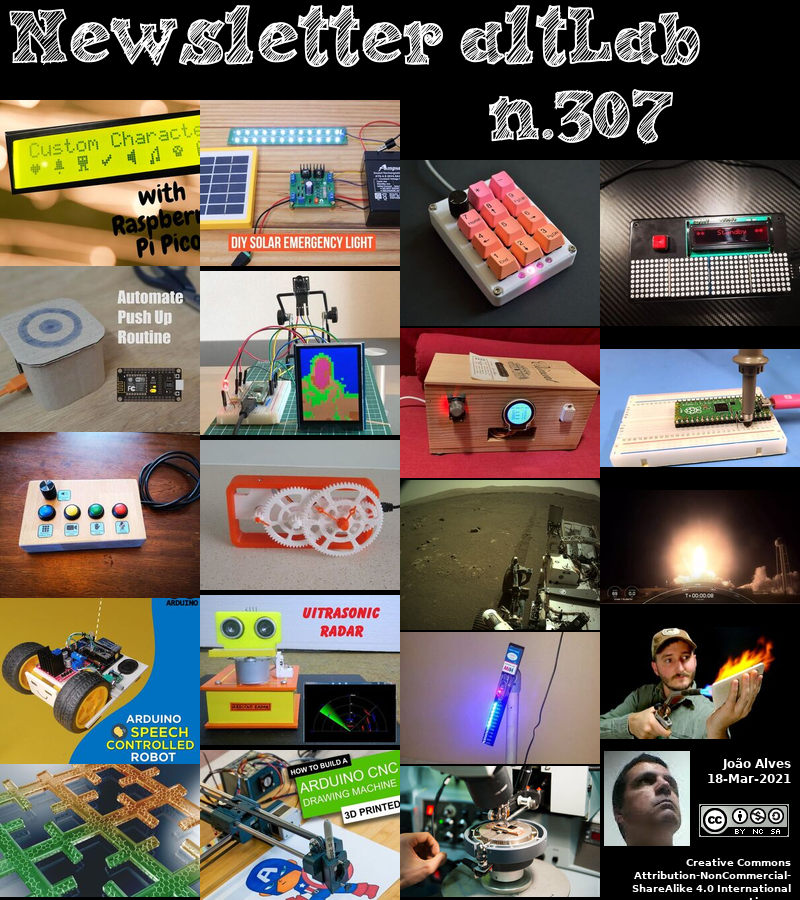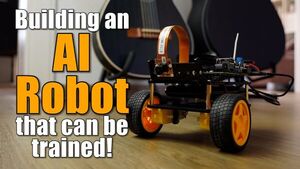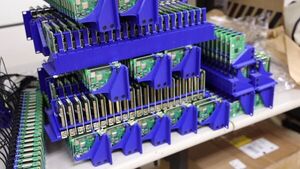2021-03-18 - Nº 307
Editorial
Esta é a Newsletter Nº 307 que se apresenta com o mesmo formato que as anteriores. Se gostar da Newsletter partilhe-a!
Todas as Newsletters encontram-se indexadas no link.
Esta Newsletter tem os seguintes tópicos:
Faz hoje anos que nascia, em 1690 o matemático russo Christian Goldbach. Ele deu contribuições para a teoria dos números que incluem a conjectura de Goldbach, formulada numa carta a Leonhard Euler datada de 7 de Julho de 1742. Declarada em termos modernos, ela propõe que: "Todo o número natural par maior que 2 é igual à soma de dois números primos." Ele foi verificado através de um computador em busca de um grande número - até pelo menos 4 x 10^14 - mas ainda não foi comprovado. Goldbach fez outra conjectura de que cada número ímpar é a soma de três primos, nos quais Vinogradov fez progresso em 1937. (Foi verificado por computador para grandes números, mas permanece sem comprovação.) Goldbach também estudou somas infinitas, a teoria das curvas e a teoria das equações.
Faz também hoje anos que nascia, em 1796, o matemático suíço Jakob Steiner. Ele foi um dos maiores contribuintes da geometria projectiva. Ele descobriu a superfície de Steiner, que tem uma dupla infinidade de secções cónicas. O teorema de Steiner afirma que os dois lápis pelos quais uma cónica é projectada de dois de seus pontos são projectivamente relacionados. Ele também é conhecido pelo teorema de Poncelet-Steiner, que mostra que apenas um determinado círculo e uma linha recta são necessários para as construções euclidianas. O seu trabalho incluiu secções e superfícies cónicas, a teoria das superfícies de segundo grau e problemas de centro de gravidade. Ele desenvolveu o princípio de simetrização (1840-41). Em 1848, ele foi o primeiro a definir várias curvas polares em relação a uma dada curva e introduziu as "Curvas de Steiner".
Por fim, faz hoje anos que nascia, em 1858 o engenheiro alemão Rudolf Diesel. Ele inventou o motor de combustão interna que tem o seu nome. Depois de estudar os motores de combustão interna de quatro tempos desenvolvidos por Nikolaus Otto, Diesel concebeu um motor que se aproximaria do limite termodinâmico estabelecido por Sadi Carnot em 1824. Se o combustível num cilindro pudesse ser expandido a pressão constante, ele poderia-se aproximar do Limite de Carnot. Ele patenteou o conceito em 1892, enquanto trabalhava na empresa do engenheiro de refrigeração Carl von Linde em Berlim.
E nesta semana que passou um foguetão Falcon 9 lançou um novo conjunto de 60 satélites da Internet Starlink em órbita na manhã de domingo (14 de Março) e acertou a sua aterragem no mar para encerrar uma missão recorde. O veterano foguetão Falcon 9 é o primeiro da frota da SpaceX a lançar e pousar um recorde de nove vezes. O lançador de dois estágios descolou do Kennedy Space Center da NASA na Florida.
Também nesta semana que passou o rover Perseverance capturou os sons da sua deslocação na superfície de Marte. Quando o rover Perseverance começou a fazer trilhos na superfície de Marte, um microfone sensível que carrega assinalou o barulho da deslocação das seis rodas do robô conforme ela se deslocavam sobre o terreno marciano.
Na Newsletter desta semana apresentamos diversas noticias, artigos científicos, projetos de maker assim como alguns videos interessantes. É apresentada a revista HackSpace Magazine nº 41 de Abril.
 João Alves ([email protected])
João Alves ([email protected])
O conteúdo da Newsletter encontra-se sob a licença  Creative Commons Attribution-NonCommercial-ShareAlike 4.0 International License.
Creative Commons Attribution-NonCommercial-ShareAlike 4.0 International License.
Novidades da Semana

SpaceX just launched a Falcon 9 rocket on a record 9th flight and stuck the landing
"It launched 60 Starlink internet satellites into orbit. A SpaceX Falcon 9 rocket launched a new batch of 60 Starlink internet satellites into orbit early Sunday (March 14) and nailed its landing at sea to top off a record-setting mission. The veteran Falcon 9 rocket is the first in SpaceX's fleet to launch and land a record nine times. The two-stage launcher blasted off from Pad 39A at NASA's Kennedy Space Center here in Florida at 6:01 a.m. EDT (1101 GMT). Approximately nine minutes later, the reusable rocket's first stage returned to Earth to attempt its ninth landing on SpaceX's drone ship "Of Course I Still Love You" stationed out in the Atlantic Ocean. The flight comes just days after the company's last launch, where a different Falcon 9 rocket took off from neighboring Space Launch Complex 40, at Cape Canaveral Space Force Station." [...]
Outras Notícias
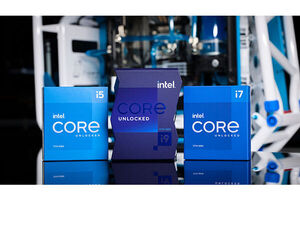
11th Gen Intel Core: Unmatched Overclocking, Game Performance
"The 11th Gen Intel® Core™ S-series desktop processors (code-named “Rocket Lake-S”) launched worldwide today, led by the flagship Intel® Core™ i9-11900K. Reaching speeds of up to 5.3GHz with Intel® Thermal Velocity Boost1, the Intel Core i9-11900K delivers even more performance to gamers and PC enthusiasts. Engineered on the new Cypress Cove architecture, 11th Gen Intel Core S-series desktop processors are designed to transform hardware and software efficiency and increase raw gaming performance. The new architecture brings up to 19% gen-over-gen instructions per cycle (IPC) improvement2 for the highest frequency cores and adds Intel® UHD graphics featuring the Intel® Xe graphics architecture for rich media and intelligent graphics capabilities. That matters because games and most applications continue to depend on high-frequency cores to drive high frame rates and low latency. Designed to Game: With its new 11th Gen desktop processors, Intel continues to push desktop gaming performance to the limits and deliver the most amazing immersive experiences for players everywhere." [...]
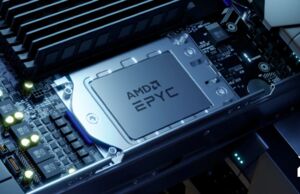
AMD EPYC™ 7003 Series CPUs Set New Standard as Highest Performance Server Processor
"At a digital event, AMD (NASDAQ: AMD) announced the new AMD EPYC™ 7003 Series CPUs, which includes the AMD EPYC 7763, the world’s highest-performing server processor2*. The new EPYC 7003 series processors help HPC, cloud and enterprise customers do more, faster, by delivering the best performance of any server CPU with up to 19% more instructions per clock3. “With the launch of our 3rd Gen AMD EPYC processors, we are incredibly excited to deliver the fastest server CPU in the world. These processors extend our data center leadership and help customers solve today’s most complex IT challenges, while substantially growing our ecosystem,” said Forrest Norrod, senior vice president and general manager, Data Center and Embedded Solutions Business Group. “We not only double the performance over the competition in HPC, cloud and enterprise workloads with our newest server CPUs, but together with the AMD Instinct GPUs, we are breaking the exascale barrier in supercomputing and helping to tackle problems that have previously been beyond humanity’s reach.” AMD EPYC Processors, Powering the Modern Data Center Available immediately, AMD EPYC 7003 Series Processors have up to 64 “Zen 3” cores per processor and introduce new levels of per-core cache memory, while continuing to offer the PCIe® 4 connectivity and class-leading memory bandwidth4 that defined the EPYC 7002 series CPUs. 3rd Gen AMD EPYC processors also include modern security features through AMD Infinity Guard, supporting a new feature called Secure Encrypted Virtualization-Secure Nested Paging (SEV-SNP)." [...]
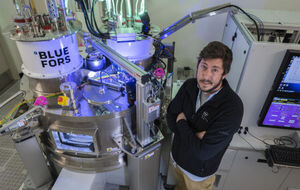
Intel’s Cryoprober for Quantum Research is Unlike Any Other Tool
"In the world of exotic high-tech tools — they can be as big as school buses and cost millions of dollars — one that sits in a lab at Intel’s Ronler Acres campus in Oregon is truly unique. It’s called a quantum cryoprober. And no tool on Earth can do what it does. The cryoprober can plunge a 300-millimeter silicon wafer to the extraordinarily low temperature of 1.7 kelvins —just a hair above absolute zero. Intel’s cryoprober is critical in the company’s ongoing quantum computing research. The promise of quantum computing is to tackle enormously complex problems that are beyond even the reach of today’s most powerful supercomputers." [...]

AMD Brings Power of “Zen 3” to World’s Best Mobile Processors for Business -- AMD Ryzen PRO 5000 Series Mobile Processors
"Today, AMD announced the AMD Ryzen™ PRO 5000 Series Mobile Processors, bringing the uncompromising performance and efficiency of the “Zen 3” core architecture to premium business laptops. Paired with AMD PRO technologies that offer strengthened multi-layer enterprise-class security features and powerhouse productivity, the new AMD Ryzen PRO 5000 Series Mobile Processors are built to meet the demands of the modern workforce. With broad availability from HP and Lenovo expected starting in Q2, the number of AMD-powered enterprise notebooks is expected to triple by the end of 2021. “Navigating an increasingly distributed work environment requires more performance and security from our professional laptops. Businesses need to be confident they are investing in technology that will meet the needs of their employees, whether they are working remotely or from the office,” said Saeid Moshkelani, senior vice president and general manager, Client Business Unit, AMD. “The new AMD Ryzen PRO 5000 Series Mobile Processors significantly increase the capabilities of ultrathin enterprise notebooks and deliver best-in-class user experiences with leadership performance, exceptional battery life and robust security features for every work environment.” AMD Ryzen PRO 5000 Series Mobile Processors AMD Ryzen PRO 5000 Series Mobile Processors are built to provide a powerful computing experience with security features for today’s demanding business environments." [...]

Microchip’s TimeProvider 4100 Release 2.2 Grandmaster Provides a New Level of Redundancy, Resiliency and Security
"IEEE 1588 precise timing grandmaster with gateway clock is the industry’s first to offer software-based redundancy For today’s critical infrastructure providers – 5G wireless networks, smart grids, data centers, cable and transportation services – a fundamental need exists for a redundant, resilient and secure precise timing and synchronization solution. Microchip Technology Inc. (Nasdaq: MCHP) today announced its TimeProviderÒ 4100 Release 2.2 grandmaster, providing a new level of resiliency with the introduction of an innovative redundancy architecture in addition to support for a multiband Global Navigation Satellite System (GNSS) receiver and enhanced security to ensure always-on precise timing and synchronization. Redundancy is key for infrastructure providers to ensure uninterrupted services. Infrastructure deployments previously relied on hardware redundancy to avoid service disruption despite costly modular architectures. Microchip’s TimeProvider 4100 Release 2.2 grandmaster provides redundancy via software implementation, enabling flexible deployment and lower hardware costs without sacrificing ports. In addition, the TimeProvider 4100 Release 2.2 grandmaster introduces an increased level of resiliency by supporting a new GNSS multi-band, multi-constellation receiver to protect against time delay resulting from space weather, solar events and other disruptions that may impact critical infrastructure services." [...]

Toshiba Introduces Lens Reduction Type CCD Linear Image Sensor for A3 Multifunction Printers
"Toshiba Electronic Devices & Storage Corporation ("Toshiba") has launched “TCD2726DG,” a lens reduction type CCD linear image sensor that achieves high-speed scanning for A3 multifunction printers. Shipments of engineering samples[1] start today. There is growing demand for A3 multifunction printers with higher scanning speeds. TCD2726DG meets the demand by improving the performance with a faster operating clock rate: a 100MHZ (50MHz x 2ch) data rate, against the 70MHz (35MHz x 2ch) data rate of Toshiba’s current sensor. To prevent increased electromagnetic interference (EMI), a negative side effect of a faster clock rate, the new sensor incorporates a timing generator circuit and has a lower CCD driver pin count. This reduces EMI- and timing-adjustment work for customers, and the number of peripheral parts, contributing to easier system development." [...]

Xilinx Expands into New Applications with Cost-Optimized UltraScale+ Portfolio for Ultra-Compact, High-Performance Edge Compute
"Xilinx, Inc., (NASDAQ: XLNX), the leader in adaptive computing, today announced the company has expanded its UltraScale+™ portfolio for markets with new applications that require ultra-compact and intelligent edge solutions. With form factors that are 70 percent smaller than traditional chip-scale packaging, the new Artix® and Zynq® UltraScale+ devices can now address a wider range of applications within the industrial, vision, healthcare, broadcast, consumer, automotive, and networking markets. As the world’s only hardware adaptable cost-optimized portfolio based on 16 nanometer technology, Artix and Zynq UltraScale+ devices are available in TSMC’s state-of-the-art InFO (Integrated Fan-Out) packaging technology. Using InFO, Artix and Zynq UltraScale+ devices meet the need for intelligent edge applications by delivering high-compute density, performance-per-watt, and scalability in compact packaging options. “Demand for compact, intelligent edge applications is driving the requirement for processing and bandwidth engines to not only provide higher performance, but also new levels of compute density to enable the smallest form factor systems,” said Sumit Shah, senior director, Product Line Management and Marketing at Xilinx. “The new cost-optimized additions to our UltraScale+ portfolio are powerful enhancements that leverage the architecture and production-proven technology of Xilinx’s UltraScale+ FPGAs and MPSoCs, which collectively have been deployed in millions of systems worldwide.” Artix UltraScale+ FPGAs: Built for High I/O Bandwidth and DSP Compute The Artix UltraScale+ family is built on its production-proven FPGA architecture and is ideal for a range of applications including machine vision with advanced sensor technology, high-speed networking, and ultra-compact “8K-ready” video broadcasting." [...]

Qualcomm Completes Acquisition of NUVIA
"Qualcomm Incorporated (NASDAQ: QCOM) today announced that its subsidiary, Qualcomm Technologies, Inc., has completed its acquisition of the world-class CPU and technology design company, NUVIA for $1.4 billion before working capital and other adjustments. “The world-class NUVIA team enhances our CPU roadmap, extending Qualcomm’s leading technology position with the Windows, Android and Chrome ecosystems,” said Cristiano Amon, President and CEO-Elect, Qualcomm Incorporated. “The broad support of this acquisition from across industries validates the opportunity we have to provide differentiated products with leading CPU performance and power efficiency, as on-demand computing increases in the 5G era.” Qualcomm Technologies expects to integrate next generation CPUs across a wide portfolio of products, including powering flagship smartphones, laptops, and digital cockpits, as well as Advanced Driver Assistance Systems, extended reality, and infrastructure networking solutions. The first Qualcomm® Snapdragon™ platforms to feature Qualcomm Technologies’ new internally designed CPUs are expected to sample in the second half of 2022 and will be designed for high performance ultraportable laptops. “We are excited to join the leading wireless innovator in the industry, driven by a common mission of inventing breakthrough technologies. Together, we will create a new class of high-performance computing platforms that set the bar for the industry,” said Gerard Williams former CEO of NUVIA, who now is SVP of Engineering at Qualcomm Technologies." [...]

Nissan finds a second use for old LEAF batteries
"One of the first commercially available electric vehicles was the Nissan LEAF, which has been on the market for many years. While the LEAF isn’t the most popular electric vehicle on the market, having been around for years longer than other EVs has allowed Nissan to work out some of the challenges associated with aging electric vehicle batteries. The main challenge is want to do with an electric vehicle battery after it no longer has the capacity to be useful in a vehicle. Nissan has found a second-life for old LEAF batteries inside mobile machines that help workers at Nissan factories worldwide. The old batteries are being used in automated guided vehicles or AGVs used for various tasks inside the manufacturing facilities, including delivering parts to workers on the assembly line. AGVs are used as robotic mail carriers operating on magnetic tracks taking mail and parts exactly where they’re needed on the assembly line." [...]
Ciência e Tecnologia
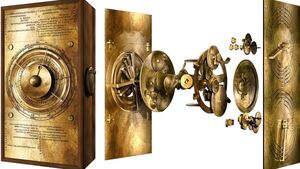
Experts recreate a mechanical Cosmos for the world’s first computer
"Researchers at UCL have solved a major piece of the puzzle that makes up the ancient Greek astronomical calculator known as the Antikythera Mechanism, a hand-powered mechanical device that was used to predict astronomical events. Known to many as the world’s first analogue computer, the Antikythera Mechanism is the most complex piece of engineering to have survived from the ancient world. The 2,000-year-old device was used to predict the positions of the Sun, Moon and the planets as well as lunar and solar eclipses. Published in Scientific Reports, the paper from the multidisciplinary UCL Antikythera Research Team reveals a new display of the ancient Greek order of the Universe (Cosmos), within a complex gearing system at the front of the Mechanism. Lead author Professor Tony Freeth (UCL Mechanical Engineering) explained: “Ours is the first model that conforms to all the physical evidence and matches the descriptions in the scientific inscriptions engraved on the Mechanism itself. “The Sun, Moon and planets are displayed in an impressive tour de force of ancient Greek brilliance.” The Antikythera Mechanism has generated both fascination and intense controversy since its discovery in a Roman-era shipwreck in 1901 by Greek sponge divers near the small Mediterranean island of Antikythera." [...]

How to prevent short-circuiting in next-gen lithium batteries
"New findings may help unleash the potential of high-powered, solid-electrolyte lithium batteries. As researchers push the boundaries of battery design, seeking to pack ever greater amounts of power and energy into a given amount of space or weight, one of the more promising technologies being studied is lithium-ion batteries that use a solid electrolyte material between the two electrodes, rather than the typical liquid. But such batteries have been plagued by a tendency for branch-like projections of metal called dendrites to form on one of the electrodes, eventually bridging the electrolyte and shorting out the battery cell. Now, researchers at MIT and elsewhere have found a way to prevent such dendrite formation, potentially unleashing the potential of this new type of high-powered battery. The findings are described in the journal Nature Energy, in a paper by MIT graduate student Richard Park, professors Yet-Ming Chiang and Craig Carter, and seven others at MIT, Texas A&M University, Brown University, and Carnegie Mellon University. Solid-state batteries, Chiang explains, have been a long-sought technology for two reasons: safety and energy density." [...]

Solar cells: Losses made visible on the nanoscale
"Silicon solar cells are now so cheap and efficient that they can generate electricity at prices of less than 2 cent/kWh. The most efficient silicon solar cells today are made with less than 10 nanometres thin selective amorphous silicon (a-Si:H) contact layers, which are responsible for separating the light-generated charges . Efficiencies of over 24% are achieved at HZB with such silicon heterojunction solar cells and are also part of a tandem solar cell that lead to a recently reported efficiency record of 29.15 % (A. Al-Ashouri, et al. Science 370, (2020)). The current world record from Japan for a single junction silicon solar cell is also based on this heterocontact (26.6%: K. Yoshikawa, et al. Nature Energy 2, (2017))." [...]

Recycle high-tech waste biologically
"nnovative biotechnological process extracts gallium from industrial wastewater Gallium is a rare metal, but it is widely used in the high-tech industry. This extreme contrast makes recycling indispensable. However, current recycling processes are costly and chemically polluted. Biotechnological approaches, therefore, rely on peptides, as they are able to bind metallic particles, minerals and metal ions in an environmentally friendly manner and to differentiate them in a targeted manner. Scientists at the Helmholtz Institute Freiberg for Resource Technology (HIF) at the Helmholtz-Zentrum Dresden-Rossendorf have now shown (DOI: 10.1016/j.jhazmat.2021.125366), that peptide-based material can be used for the extraction of gallium from production wastewater caused by the semiconductor industry. Our high-tech world would be unthinkable without rare metals because they are found in many devices and systems that surround us." [...]
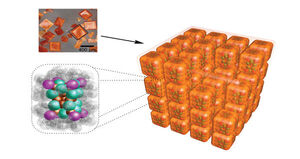
Self-stacking nanocubes
"Copper nanomaterials with a cubic shape so perfect that they form neatly aligned stacks when brought together have been created by researchers at KAUST. The cuboid copper nanoclusters, developed by rational design, are a new member of an exotic nanomaterial family that has shown many promising properties but has remained very hard to make. “Copper nanomaterials are a class of materials that exhibit useful properties for the fields of photoluminescence and catalysis,” says Ren-Wu Huang, a postdoc in Osman Bakr's lab, who led the research. There is great interest in synthesizing new copper nanomaterials to understand how their structure influences their function. Copper nanoclusters, which are of an atomically precise structure, are among the few copper nanomaterials that can provide such insights at the atomic level because their total structure can be determined by single-crystal x-ray diffraction. “However, the synthesis of copper nanoclusters is still a great challenge and its pace of development is slow compared to nanoclusters made from its sister metals, silver and gold,” Huang adds." [...]
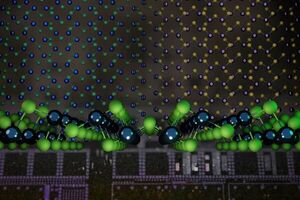
Most Flexible 2D Material Discovered at UT Austin
"A new kind of two-dimensional (2D) material with unique properties has been discovered by researchers with The University of Texas at Austin, bringing next-generation flexible electronic devices one step closer. In materials science, size matters. And currently 2D materials are the hottest ticket. Thanks to their atomically-thin size, light weight, high stretchability, impressive biocompatibility, and the high performance rate of those with unique properties, 2D materials such as graphene have proved useful in a variety of ways including for technologies such as wearable human health care monitoring systems. Researchers at UT Austin’s Center for Computational Materials and the Oden Institute for Computational Science and Engineering used supercomputers to discover the 2D materials that show ferroelectric, piezoelectric properties. These atomically-thin materials are ferroelectric on account of their capacity for switchable, spontaneous electric polarization, and piezoelectric because that electric current is the result of applying pressure and heat." [...]
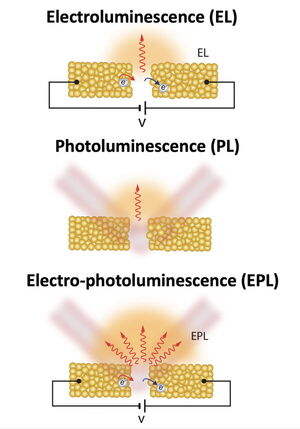
Teamwork makes light shine ever brighter
"Combined energy sources return a burst of photons from plasmonic gold nanogaps If you’re looking for one technique to maximize photon output from plasmons, stop. It takes two to wrangle. Rice University physicists came across a phenomenon that boosts the light from a nanoscale device more than 1,000 times greater than they anticipated. When looking at light coming from a plasmonic junction, a microscopic gap between two gold nanowires, there are conditions in which applying optical or electrical energy individually prompted only a modest amount of light emission. Applying both together, however, caused a burst of light that far exceeded the output under either individual stimulus. The researchers led by Rice physicist Douglas Natelson and lead authors Longji Cui and Yunxuan Zhu found the effect while following up experiments that discovered driving current through the gap increased the number of light-emitting “hot carrier” electrons in the electrodes." [...]

New fabrication method paves way to large-scale production of perovskite solar cells
"A new, simpler solution for fabricating stable perovskite solar cells overcomes the key bottleneck to large-scale production and commercialization of this promising renewable-energy technology, which has remained tantalizingly out of reach for more than a decade. “Our work paves the way for low-cost, high-throughput commercial-scale production of large-scale solar modules in the near future,” said Wanyi Nie, a research scientist fellow in the Center of Integrated Nanotechnologies. Nie is the corresponding author of the paper, which was published today in the journal Joule. “We were able to demonstrate the approach through two mini-modules that reached champion levels of converting sunlight to power with greatly extended operational lifetimes. Since this process is facile and low cost, we believe it can be easily adapted to scalable fabrication in industrial settings.” A highly anticipated solar technology Perovskite photovoltaics, seen as a viable competitor to the familiar silicon-based photovoltaics on the market for decades, have been a highly anticipated emerging technology over the last decade. Commercialization has been stymied by the lack of a solution to the field’s grand challenge: scaling up production of high-efficiency perovskite solar cell modules from the bench-top to the factory floor." [...]

Shutting the nano-gate
"Researchers at Osaka University create voltage-controlled nanopores that can trap particles as they try to pass through, which may lead to single-molecule sensors, along with cheaper and faster genomic sequencing Scientists from the Institute of Scientific and Industrial Research at Osaka University fabricated nanopores in silicon dioxide, that were only 300 nm, in diameter surrounded by electrodes. These nanopores could prevent particles from entering just by applying a voltage, which may permit the development of sensors that can detect very small concentrations of target molecules, as well as next-generation DNA sequencing technology. Nanopores are tiny holes that are wide enough for just a single molecule or particle to pass through. The motion of nanoparticles through these holes can usually be detected as an electrical signal, which makes them a promising platform for novel single-particle sensors. However, control of the motion of the particles has been a challenge so far. Scientists at Osaka University used integrated nanoelectromechanical systems technology to produce solid-state nanopores, only 300 nm wide, with circular platinum gate electrodes surrounding the openings that can prevent nanoparticles from passing through." [...]
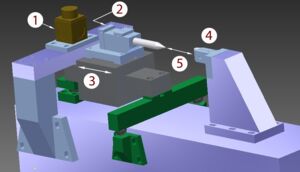
As Good as it Gets: NIST Develops Its Fourth Generation Wire Micrometer that Rivals Best in the World
"Researchers at the National Institute of Standards and Technology (NIST) have developed a dramatically improved laser-based instrument that measures the diameter of fine-gauge wires, fibers and other objects only about three times the thickness of a human hair. Known as a laser micrometer, the device’s accuracy equals that of its state-of-the-art counterparts but is cheaper, simpler to operate and easier to maintain. NIST scientists John Stoup and Ted Doiron reported their findings in the December 15, 2020 issue of Metrologia. The new micrometer uses an advanced laser displacement interferometer, which relies on light to measure the thickness of objects held between two metal contacts. With the new system, researchers can measure the diameter of any object less than 50 millimeters wide, including fine-gauge wires and fibers, with an uncertainty of just 2 nanometers. That’s better than twice the accuracy of previous laser micrometers developed at NIST." [...]

Algorithm helps artificial intelligence systems dodge “adversarial” inputs
"Method builds on gaming techniques to help autonomous vehicles navigate in the real world, where signals may be imperfect. In a perfect world, what you see is what you get. If this were the case, the job of artificial intelligence systems would be refreshingly straightforward. Take collision avoidance systems in self-driving cars. If visual input to on-board cameras could be trusted entirely, an AI system could directly map that input to an appropriate action — steer right, steer left, or continue straight — to avoid hitting a pedestrian that its cameras see in the road. But what if there’s a glitch in the cameras that slightly shifts an image by a few pixels?" [...]

Astronomers Detect a Black Hole on the Move
"Scientists have long theorized that supermassive black holes can wander through space—but catching them in the act has proven difficult. Now, researchers at the Center for Astrophysics | Harvard & Smithsonian have identified the clearest case to date of a supermassive black hole in motion. Their results are published today in The Astrophysical Journal. "We don't expect the majority of supermassive black holes to be moving; they're usually content to just sit around," says Dominic Pesce, an astronomer at the Center for Astrophysics who led the study. "They're just so heavy that it's tough to get them going. Consider how much more difficult it is to kick a bowling ball into motion than it is to kick a soccer ball — realizing that in this case, the 'bowling ball' is several million times the mass of our Sun." [...]

New perovskite LED emits a circularly polarized glow
"Light-emitting diodes (LEDs) have revolutionized the displays industry. LEDs use electric current to produce visible light without the excess heat found in traditional light bulbs, a glow called electroluminescence. This breakthrough led to the eye-popping, high-definition viewing experience we’ve come to expect from our screens. Now, a group of physicists and chemists have developed a new type of LED that utilizes spintronics without needing a magnetic field, magnetic materials or cryogenic temperatures; a “quantum leap” that could take displays to the next level. “The companies that make LEDs or TV and computer displays don’t want to deal with magnetic fields and magnetic materials. It’s heavy and expensive to do it,” said Valy Vardeny, distinguished professor of physics and astronomy at the University of Utah." [...]

Size matters when it comes to atomic properties
"A study from Chalmers University of Technology, Sweden, has yielded new answers to fundamental questions about the relationship between the size of an atom and its other properties, such as electronegativity and energy. The results pave the way for advances in future material development. For the first time, it is now possible under certain conditions to devise exact equations for such relationships. “Knowledge of the size of atoms and their properties is vital for explaining chemical reactivity, structure and the properties of molecules and materials of all kinds. This is fundamental research that is necessary for us to make important advances,” explains Martin Rahm, the main author of the study and research leader from the Department of Chemistry and Chemical Engineering at Chalmers University of Technology. The researchers behind the study, consisting of colleagues from the University of Parma, Italy, as well as the Department of Physics at Chalmers University of Technology, have previously worked with quantum mechanical calculations to show how the properties of atoms change under high pressure." [...]

Scientists Take Step Towards Quantum Supremacy
"A Russian-German research team has created a quantum sensor that grants access to measurement and manipulation of individual two-level defects in qubits. The study by NUST MISIS, Russian Quantum Center and the Karlsruhe Institute of Technology, published in npj Quantum Information, may pave the way for quantum computing. In quantum computing the information is encoded in qubits. Qubits (or quantum bits), the quantum mechanical analogue of a classical bit, are coherent two-level systems. A leading qubit modality today superconducting qubits based on the Josephson junction. That is the kind of qubit IBM and Google used in their quantum processors." [...]

New material: Rapid color change
"Smart glass can change its color quickly through electricity. A new material developed by LMU-chemists has now set a speed record for such a change. On the highway at night. It rains, the bright headlights of the car behind you are blinding. How convenient to have an automatically dimming rearview mirror in such a case. Technically, this helpful extra is based on electrochromic materials." [...]
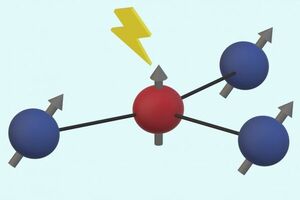
New error correction method provides key step toward quantum computing
"An Army project devised a novel approach for quantum error correction that could provide a key step toward practical quantum computers, sensors and distributed quantum information that would enable the military to potentially solve previously intractable problems or deploy sensors with higher magnetic and electric field sensitivities. The approach, developed by researchers at Massachusetts Institute of Technology with Army funding, could mitigate certain types of the random fluctuations, or noise, that are a longstanding barrier to quantum computing. These random fluctuations can eradicate the data stored in such devices. The Army-funded research, published in Physical Review Letters, involves identifying the kinds of noise that are the most likely, rather than casting a broad net to try to catch all possible sources of disturbance. "The team learned that we can reduce the overhead for certain types of error correction on small scale quantum systems," said Dr. Sara Gamble, program manager for the Army Research Office, an element of U.S. Army Combat Capabilities Development Command's Army Research Laboratory. "This has the potential to enable increased capabilities in targeted quantum information science applications for the DOD."" [...]
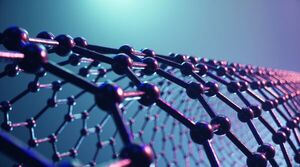
NPL Develop ISO/IEC Standard for Measuring Graphene Structural Properties
"The National Physical Laboratory (NPL), in collaboration with international partners, have developed an ISO/IEC standard, ISO/TS 21356-1:2021, for measuring the structural properties of graphene, typically sold as powders or in a liquid dispersion. The ISO/IEC standard allows the supply chain to answer the question ‘what is my material?’ and is based on methods developed with The University of Manchester in the NPL Good Practice Guide 145. Over the last few years, graphene, a 2D material with many exciting properties and just one atom thick, has moved from the laboratory into real-world products such as cars and smartphones. However, there is still a barrier affecting the rate of its commercialisation, namely, understanding the true properties of the material. There is not just one type of material, but many, each with different properties that need matching to the many different applications where graphene can provide an improvement. With hundreds of companies across the globe selling different materials labelled as ‘graphene’, and manufacturing it in different ways, end users who want to improve their products by incorporating few-layer graphene flakes are unable to compare and subsequently select the right material for their product." [...]

How A Building Block Of Life Got Created In A Flash
"In 2016, a family in Illinois thought that a meteorite had hit their backyard. They called up the geology department at nearby Wheaton College to say that whatever struck their property had started a small fire and had left a weird rock embedded in the scorched dirt. "Meteorites, contrary to popular belief, are cold when they hit the ground," says Benjamin Hess, who was an undergraduate at the college but is now a graduate student at Yale University. "My professor readily figured out that that was probably a lightning strike." When lightning strikes sand, soil or stone, it immediately melts the materials into a glassy clump known as a fulgurite, or lightning rock. When geologists excavated the fulgurite in Illinois, they found something unexpected inside — an important ingredient for life that had long been thought to be delivered to early Earth by meteorites." [...]

ASU scientists determine origin of strange interstellar object
"In 2017, the first interstellar object from beyond our solar system was discovered via the Pan-STARRS astronomical observatory in Hawaii. It was named ‘Oumuamua, meaning "scout" or "messenger" in Hawaiian. The object was like a comet, but with features that were just odd enough to defy classification. Two Arizona State University astrophysicists, Steven Desch and Alan Jackson of the School of Earth and Space Exploration, set out to explain the odd features of ‘Oumuamua and have determined that it is likely a piece of a Pluto-like planet from another solar system. Their findings have been recently published in a pair of papers (part I and part II) in the AGU Journal of Geophysical Research: Planets. “In many ways ‘Oumuamua resembled a comet, but it was peculiar enough in several ways that mystery surrounded its nature, and speculation ran rampant about what it was,” said Desch, who is a professor in the School of Earth and Space Exploration." [...]

Self-folding nanotech creates world’s smallest origami bird
"If you want to build a fully functional nanosized robot, you need to incorporate a host of capabilities, from complicated electronic circuits and photovoltaics to sensors and antennas. But just as importantly, if you want your robot to move, you need it to be able to bend. Cornell researchers have created micron-sized shape memory actuators that enable atomically thin two-dimensional materials to fold themselves into 3D configurations. All they require is a quick jolt of voltage. And once the material is bent, it holds its shape – even after the voltage is removed. Radical Collaboration As a demonstration, the team created what is potentially the world’s smallest self-folding origami bird." [...]

Spin-states in MoS2 thin-film transistors distinguished by operando electron spin resonance
"We fabricate a novel molybdenum disulfide transistor and create an image of the spins of the electrons passing through which may open the way for new spintronic computers The collaboration of the University of Tsukuba (Tsukuba, Japan) and the Institute of High Pressure Physics (Warsaw, Poland) detected and mapped the electronic spins moving in a working transistor made of molybdenum disulfide. This research may lead to much faster computers that take advantage of the natural magnetism of electrons, as opposed to just their charge. Spintronics is a new area of condensed matter physics that attempts to use the intrinsic magnetic moment of electrons, called “spins,” to perform calculations. This would be a major advance over all existing electronics that rely solely on the electron charge. However, it is difficult to detect these spins, and there are many unknowns regarding materials that can support the transport of spin-polarized electrons. Now, an international research team led by the Division of Materials Science at the University of Tsukuba has successfully used electron spin resonance (ESR) to monitor the number and location of unpaired spins coursing through a molybdenum disulfide transistor." [...]

Nano-mapping phase transitions in electronic materials
"Scientists at EPFL and the University of Geneva have combined two powerful, cutting-edge techniques to uncover the physics behind an exotic phase transition that turns a metal into an insulator. The materials they looked at are rare-earth nickelates, which are of great interest for innovating new approaches in electronics. “Phase transitions” are a central phenomenon in physical sciences. Despite being technical-sounding, they are actually something we all experience in everyday life: ice melting into liquid water, or hot water evaporating as steam. Solid, liquid, and gas are three well known “phases” and, when one turns into another, that is a phase transition. Rare-earth nickelate oxides, also called nickelates, have attracted a lot of interest from researchers because they display an electronic phase transition, which may be exploited in future electronic devices." [...]

New analysis of 2D perovskites could shape the future of solar cells and LEDs
"An innovative analysis of two-dimensional (2D) materials from engineers at the University of Surrey could boost the development of next-generation solar cells and LEDs. Three-dimensional perovskites have proved themselves remarkably successful materials for LED devices and solar panels in the past decade. One key issue with these materials, however, is their stability, with device performance decreasing quicker than other state-of-the-art materials. The engineering community believes the 2D variant of perovskites could provide answers to these performance issues. In a study published in The Journal of Physical Chemistry Letters, researchers from Surrey's Advanced Technology Institute (ATI) detail how to improve the physical properties of 2D perovskite called Ruddlesden-Popper. The study analysed the effects of combining lead with tin inside the Ruddlesden-Popper structure to reduce the toxic lead quantity." [...]
Documentação
A documentação é parte essencial do processo de aprendizagem e a Internet além de artigos interessantes de explorar também tem alguma documentação em formato PDF interessante de ler. Todos os links aqui apresentados são para conteúdo disponibilizado livremente pelo editor do livro.
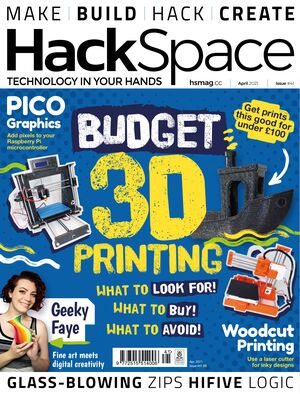
HackSpace magazine #41
"If you thought you had to spend big to get decent prints, think again. There’s a quality printer out there for you for under £100 – and we’ll help you to find it. Put ink on blocks of wood to print things the old fashioned way Connect little smart boxes over the internet to make a simple IoT network Find out from a real artist what's so great about 3D printed carpentry Expand the capability of the Pico Explorer with supercharged graphics" [...]
Projetos Maker
Diversos Projetos interessantes.
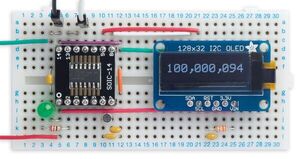
100MHz Frequency Meter using ATtiny414
"This project is a simple frequency meter capable of measuring frequencies up to 100MHz with an accuracy of 0.002%. Based on an ATtiny414, it demonstrates the use of Timer/Counter TCD0 and the Event System I recently wanted to design a frequency meter that would measure up to 100MHz, so you can use it to test processor clocks and crystals. There are many designs for microcontroller-based frequency meters on the web; after all, it's one of the applications that the timer/counters in most microcontrollers are designed for. However, most of them don't go as high as 100MHz because the microcontroller's own clock usually imposes an upper limit of half the clock frequency. First attempt My plan was to use the Real-Time Clock peripheral, clocked by a 32.768kHz crystal, to generate a 1Hz interrupt. A second timer/counter, clocked by the frequency being measured, would then count the number of cycles in this one-second interval." [...]
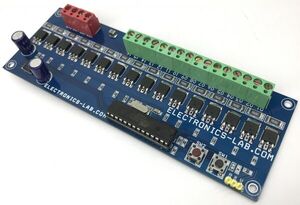
16 High Power LEDs Knight Rider Light – Arduino Compatible
"This is a Knight Rider LED Light and it is one of the best Arduino projects for beginners. This board drives 16 high-power LEDs to turn them ON one by one sequentially. This is an open-source Arduino compatible project that contains 16 high current MOSFETs, Atmega328 microcontroller, 5V regulator etc. The gate of IRLR7843 MOSFETs is connected to the I/O pins of the Atmega328 chip. Screw terminals are provided to connect the LEDs and power supply. Additional 2 x tactile switches and one connector for analog input are provided for further experiments." [...]

Getting Started With Particle Argon
"IntroductionThe Particle Argon, Boron, and Xenon are Particle IoT dev boards with mesh networking. All the boards are all built around the Nordic nRF52840 SoC and include an ARM Cortex-M4F with 1MB of Flash and 256k of RAM. This chip supports Bluetooth 5 and NFC. The Argon adds WiFi with an ESP32 from Espressif and in this project, how to setup Argon along with controlling LED's using webpage and Argon is discussed in a detail. Components Needed Particle Argon ==> $28 Breadboard ==> $6 LED's ==>$2 The Argon is a powerful Wi-Fi enabled development kit that can act as either a standalone Wi-Fi endpoint or WiFi enabled gateway for Particle Mesh networks. It is based on the Nordic nRF52840 and has built-in battery charging circuitry so it’s easy to connect a Li-Po and deploy your local network in minutes." [...]

How to Make an Emergency Light
"Emergency lights are very useful gadgets and are quite popular, too. During the power failure, these portable lights are able to instantly illuminate through battery back up and never allow us to stumble in the darkness. Although you will find them in the market at a very low price, building your own emergency light at home can be a totally different experience. It will not only help you to create a quality design but also will acquaint you with the technical aspects of the unit. Besides, you also get an opportunity to customize the circuit as per your own requirements. The idea of the present emergency light circuit is that it should be compact and may be kept plugged into the mains socket for a permanent automatic operation." [...]

Speech Recognition With an Arduino Nano
"I was desperate for something to read during lockdown and found in my bookcase an IEEE report on Speech Recognition from the late 1970s. Could an Arduino Nano do the same as a computer from that era? How does a Nano compare with back then? A Nano has 2KB RAM, 32KB program ROM and runs at about 10 MIPS (depending on the instruction mix). The sort of minicomputer people were using back then ran at 0.5 to 8 MIPS and had, say, 2K to 32K of memory split between program and data. Most groups had a PDP-8 or PDP-11." [...]

Zoom USB Button Machine
"Many of us have changed how we do things during this pandemic, from work to worship. The main commonality is that we are using remote video conferencing tools more and more. The most common has been Zoom, though not the only one. I have seen many of our friends, especially the less tech savvy, struggle with using the tools... "you are on mute" is probably the most common affliction these days. In order to alleviate some of these issues I decided to make a small box that will automatically send the keyboard shortcuts needed for muting, raising hand, video on off, etc when the button is pressed. *NOTE* This will not work on all Arduino models (UNO, Nano, etc)." [...]
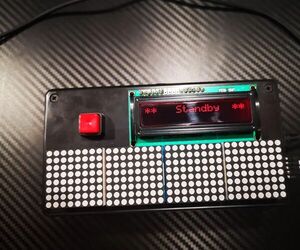
Predator Count Down Box
"This is a count down timer with some flair! This project was made as part of an assignment for an online engineering course. The purpose was to have a timer with a set time which would then prompt the user to some action. The timer is activated when the button is pressed, and the LCD screen will simply show the countdown. Once the timer expires there is a buzzer which will sound accompanied by a message on screen to get moving. Within the parts bin we had a nifty 32x8 dot matrix display... the dots are red." [...]
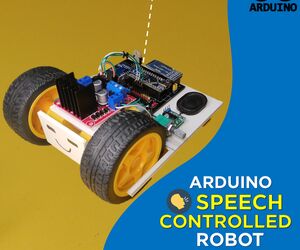
Speech Controlled Robot (Easy Version)
"Robots are cool. To have a robot that can move around listening to your voice commands is more cool. To make such a Speech or Voice controlled robot with Arduino is more more and more cool. Because Arduino's are cheap and easy to tweak. The robot is based on PCB. A PCB I designed to use in different robots." [...]
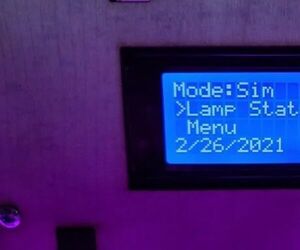
Open Grow Light
"Exactly a year ago (February 2020), James’ wife wanted to expand her plant growing setup in the house. This included a bigger, larger, taller plant growing area AND the need for more lighting. BINGO! The seed for the Idea was planted. After an exhaustive market research, not able to find the product that we had in mind, we started the design of this new amazing device. What started as a simple programmable light source has evolved into a full featured Open Source Grow System which you can use to simulate the seasonal lighting condition/duration for any desired latitude and it will also control the moisture and temperature of your growing area year-round." [...]

Custom Characters With Raspberry Pi Pico and LCD 16*2 Display
"Writing your own custom characters on an LCD display is fun, so i will teach you how to do it by yourself. Let's begin. Supplies: Raspberry Pi Pico 16*2 LCD Display and its i2c adapter breadboard Some Jumper wires" [...]

Make Your Own Arduino AC Dimmer | Drive Motors & Lights
"Hi every one, here Chris, and I want to show you how I made my own Arduino AC dimmer that can control AC loads such as motors and lights easily. It has the power to handle 1200+ Watts and It's a very nice project for domotics and home automation because the microcontroller I used is the ESP8266 that has WiFi capabilities and the code could be adapted with few changes. Here I leave you a tutorial with all the information so you can make your own version.If you are a visual learner I know that a video worth more than 1000 words, so here is a Tutorial video. This project may seem difficult or very complex, but it is definitely not completely, since you will have all the guidance for the construction, it was difficult for me to design it to make life a little easier for you. Any conceptual doubt, you are free to ask it without problems. You should have an understanding of: 3D Printing (Optional for the case)." [...]

Automate Push Up Routine With ESP8266
"For most of us during lock down, we have been practicing a lot of exercises. Either its some stretching or some muscle building exercises. But one issue that I have faced personally is keeping track of my workouts. I was unable to see my progress as there was not some sort of recording of my exercises. This let me to an uneven workout routine and was not motivated to increase my repetition. This is when I realized that I could build something that count the number of a particular exercise I practiced and store it in a database." [...]
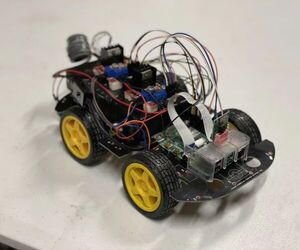
Remote-Controlled Car Using Raspberry Pi
"In the golden age of artificial intelligence and technology, a new subfield is gaining traction: swarm robotics. Swarm robots have a great number of applications, like localized task completion in automation, autonomous navigation, or terrestrial mapping in areas that humans are unable to access. The basis of these robots is a radio-controlled (RC) car. Once multiple cars are built, swarm robotics algorithms can be implemented. The brain of these cars is Raspberry Pi, a low entry point architecture for experimenting with hands-on robotics and programming. This tutorial walks through the steps to build such a car." [...]
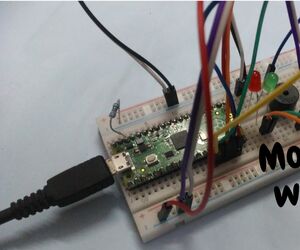
Implementation of Morse Code Raspberry Pi Pico
"Morse Code is fun to play with friends and family but it is hard to understand so this machine helps you to learn this pretty fast and you can create your own code language with dots and dashes. Supplies: 1. Raspberry Pi Pico 2. Male to Male jumper wires 3. 2 LED's (of any color) 4. Peizo Buzzer 5." [...]
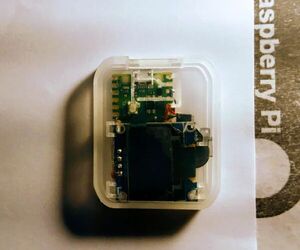
SD Card Size GAME Console With Pico
"i was wondering about how to put MCU and displayer into an SD card ! i use the pico to slim SD card case, finally! By now. it is powerful when you use the pico 2040, you will find out it at the very first time . it's tiny but very powerful ! Materials: 1." [...]

Programmable Macropad V2
"In this Instructable I will walk through how I build my new and improved Macropad. I made one a while back and it has always had some things I would like to improve on it. The main one being the location of the state LEDs. When redesigning the case I figured why not take a look at the whole thing and see if I can do a better job. So I did. This macropad is capable of 10 buttons per layout and up to 16 layouts in total." [...]

JAL Project- Household Water Usage Tracker
"This Water Monitoring System would enable a society or houses to monitor, limit and record their water usage Water is the most important and critical part of our life. This clear, amorphous liquid is key to our life. Water Conservation and Monitoring System would enable a society or cluster of houses in the vicinity to monitor, limit and record their water usage via application in their phone. Users may choose laissez faire or intermittent flow of water to their homes. The project is expected in an acropolis form. The three of us after many rounds of extreme hours of brainstorming came to a conclusion of using Arduino and Node MCU to bring this project to life." [...]
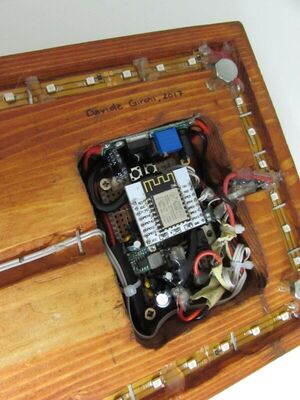
ESP8266 ESC/POS Smart Thermal Printer
"The gear introduced here is a device that use a ESP8266 to print text that comes from a RESTful API or from an internal database to an ESC/POS thermal printer. The clue here is to build a device that call a RESTful API, and print the text the API returns to a thermal printer, and eventually fits a thermal printer. I want the printer to be capable of printing: when a button is pressed once in a day at a specific day time many times after minutes have passed To build this thing I decided to use a ESP8266. At startup the ESP8266 try to connect to a WiFi network, if it does not reach the last network used, or no network was imposed before, the device comes to a "forced AP mode", that way one can connect to the device WiFi and set the main WiFi AP to be used for the internet connection. The WiFiManager (https://github.com/tzapu/WiFiManager) library it's used for this purpose. " [...]

ATtiny1614 Function Generator
"A tiny function generator built using the ATtiny1614 microprocessor and its internal Digital-To-Analog Convertor (DAC). The ATtiny1614 processor The ATtiny1614 is part of the new breed of ATtiny microprocessors. One of its features is a built-in Digital-to-Analog Convertor or DAC. This project started out as an experiment in finding what the limitations were in generating sine waves using the internal DAC. The concept is simple, fill up a table of voltage levels for various points on a sine wave and repeatedly play them back via the DAC. Consider storing 256 points for one complete cycle of a waveform." [...]

Wireless Distance Measurement Based on 24GHz Radar
"Interfacing an Infineon Distance2Go radar sensor with a cybt-213043-mesh Bluetooth LE device to create a radar obstacle detection system. In this application we interface an Infineon Distance2Go board with a cybt-213043-mesh Bluetooth LE device to create a radar obstacle detection sensor mounted in the front of a car. The measurements are sent via Bluetooth to a modified version of CySmart App on a smartphone.The complete setup is powered via a USB power bank. Infineon-Radar FAQ PDF provides an overview of the different modes of operation of the Distance2Go board, giving insights into the theory of radar speed and distance detection. During this project, we will be using FMCW-mode to measure distance (for an in-depth description see page 4 of the document).Summarized, in this mode the Distance2Go board sends a signal with continously changing frequency and receives the incoming signal bounced off of an obstacle. By mixing these two signals together, the distance to the obstacle can be calculated." [...]
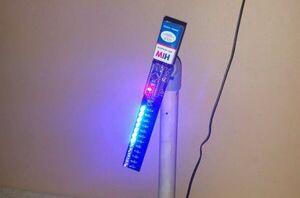
POV Clock/Display Making
"This Project we are going how to make a cool POV clock in a simple way. This Project we are going how to make a cool POV clock in a simple way. POV stands for persistence of vision. It is a kind of optical illusion where a visual image seems to persist even when the rays of light from it cease to enter our eyes which makes it awesome! You can display any text or image that you want to with it. What is POV?" [...]

Dummy electronic Load v2.0
"Previous version of electronic load was good, but it had a small power dissipation capacity and without proper enclosure or display. So I decided to make a newer one in a grander scale. I am hands-on with electronics, but mechanical workmanship is something that I lack. So I try to take the easy way. For most projects that I had worked on, enclosure (or lack of) was the reason for abandoing them half the way. So, this time, I started with the solution for the hardest part." [...]
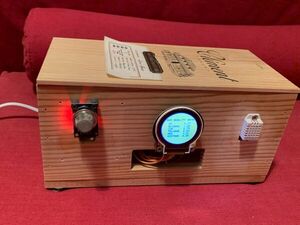
Sensor Station
"Very simple station that shows: Temperature, Humidity, Heat index, Carbon Monoxide, Alcohol, Carbon dioxide, Toluene, Ammonium and Acetone I wanted to have a simple station that monitors: Temperature, Humidity, Heat index, Carbon Monoxide, Alcohol, Carbon dioxide, Toluene, Ammonium and Acetone. It's made out of:- Arduino Nano- DHT 22- MQ 135- 5V Power Supply- Push button (Normally open)- DF Robot 2.2" display (DFR0529)" [...]

RGB Matrix Portal Room CO2 Monitor
"Carbon dioxide, aka CO2, is a gas that is an essential part of the Earth's atmosphere and life in general. However, while essential, it can have negative effects when concentrations exceed certain level. It can impact the entire planet via global warming. But it can also have very local effects, for example on indoor air quality. Elevated levels of CO2 can lead to reduced cognitive ability and other health related concerns. Therefore, monitoring CO2 levels of inside air can be useful as a part of gauging general air quality." [...]

Real time Automated smart sensor city
"Real time automatic home ligthing syatem, automatic plant watering system, anti social smoking system IT IS A REAL TIME PROJECT AUTOMATICHOMELIGTHINGSYSTEM: Automatic Room Lighting System is amicrocontroller based project that automatically turns on or off the lights ina room. Electricity, being one of the most important resources, must beutilized carefully. We often forget to switch off lights orfans when we leave a room. By using this system, we can intentionally forgetabout the lights as the system will automatically take care of them. The digital World we are living in allowsus to use different technologies to automatically perform certain tasks. Suchautomation is very useful in certain areas like energy consumption, reducinghuman efforts, improving standard of living etc." [...]
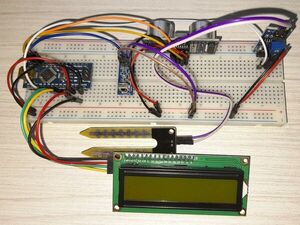
Soil moisture and distance sensor with IR remote control
"A project that can measure soil moisture or distance till the nearest object and displaying them on a LCD (using I2C). " [...]
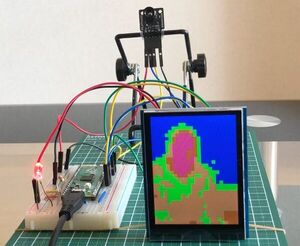
Intruder Detection Using Raspberry Pi Pico and Edge Impulse
"A system which detects intruders in dark with a low resolution thermal camera connected to a Raspberry Pi Pico using a Tensorflow Lite model Suppose you are alone at home or out for shopping or on vacations and someone breaks into your house. First thing comes into your mind is: if there is some gadget or home security system which can alert you or your neighbors. The home security camera does a good job but they may not work in complete dark. Also, you do not want your gadget to turn on false alarm if it is a cat. In this project I built a proof of concept which merely turn on an LED when it detects a person in light or dark using just a Raspberry Pi Pico and a thermal camera. " [...]
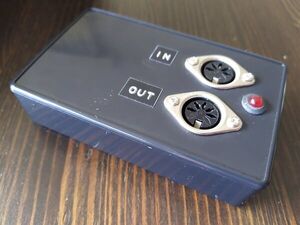
USB MIDI Adapter
"Simple USB to MIDI adapter based on an Arduino Micro or Leonardo, optionally with the ability to filter the MIDI data. I searched the net how to build a USB to MIDI adapter using an Arduino, but unfortunately I only found solutions that were not that great (poor MIDI software or hardware implementations). So I decided to build my own and put the result here on hackster.io. I used an Arduino Leonardo with a breadboard to build the first prototype. Once everything was working, I built a soldered version using an Arduino Micro instead. Both are based on the ATmega32u4, which has native USB allowing it to present itself as a USB MIDI interface to the PC you connect it to." [...]
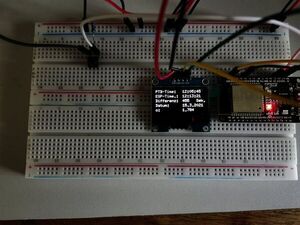
Easily check the accuracy of the RTC from the ESP32
"While looking for the accuracy of the ESP32 RTC, the idea came up to measure it and continue working with the data. The ESP32 should get the time from a time server via WiFi and compare it with the RTC of the ESP. The times and the time difference should be shown on the display. Between the measurements, the ESP should go into deep sleep mode. In addition, the data should be saved on a web server. A Raspberry Pi with Apache and PHP serves as the web server." [...]

Glowtie
"A light-up bowtie you control over Wifi! The Glowtie is a light-up bowtie! It clips onto the top button of your dress shirt and can display any number of colors and animations. When you turn the Glowtie on, the onboard ESP8266 hosts an AP network that you can connect to with your phone to control the lights. The Glowtie is based on the ESP-12F ESP8266 module, which controls lighting animations for the WS2812B LEDs (Neopixels). The ESP hosts an Access Point network with a site that you can use to control the patterns and colors of the lights." [...]
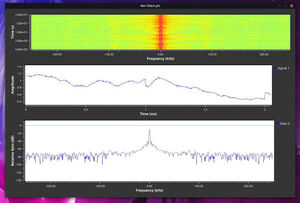
PiccoloSDR (WIP)
"This example is a Raspberry Pico RP2040 working as a basic direct-sampling SDR. The data is sent via USB using the RNDIS protocol to emulate a TCP/IP interface. The ADC speed is limited to 500 ksps. This was tested on Linux but should work fine on Windows. The data can be used with software like the GNU Radio, an example is available here. It requires an OOT module that can be found here." [...]
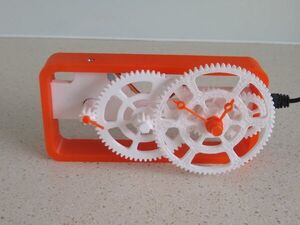
Gear Clock
"A 3D printed clock driven by a single stepper motor using gears to separate hours, minutes and seconds. This build replaces the electronics used in the Simple Super Gear Clock by Tokyo_Bird. The Arduino Nano module and ULN2003A stepper motor driver module has been replaced with a ATtiny1614 microprocessor and 4 MOSFETs. All components are surface mount and fit on a board with the same form factor as the Arduino Nano module. " [...]
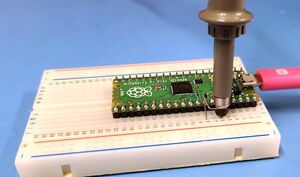
Characterizing the Raspberry Pi Pico ADC
"The RP2040 datasheet has a woefully underspecified Analog to Digital Converter, only 3 lines Compare this to the Digital IO Characteristics (Table 631); it has 18 lines! And ADCs have much more complexity and nuance than a Digital IO (however, Digital IO blocks have surprising complexity). In this project, I will explain different ADC specifications, how they can be characterized, and the results of those tests on the PR2040. Issues Found During this project, I found some issues and inconsistencies with the ADC. The biggest thing is that the ADC has some significant DNL issues. It looks like those were caused by a systematic error in the capacitors for the DAC portion of the SAR ADC." [...]

Head-Pose Estimation on Ultra96-V2
"The project describes how to implement a real-time head pose estimation on Ultra96-V2 using Vitis-AI. The Xilinx Model Zoo contains many pre-built convolutional neural network models. This project makes use of several of these models, in order to implement a foundation for creating face applications. face detection : densebox_640_360 face landmark detection : facelandmark" [...]
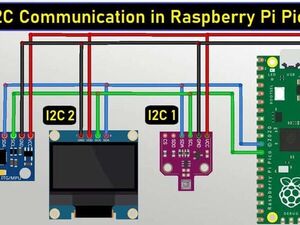
How to use I2C Pins in Raspberry Pi Pico | I2C Scanner Code
"In this tutorial, we will learn how to use I2C Pins in Raspberry Pi Pico & go through the I2C Scanner Code. In this tutorial, we will learn how to use I2C Pins in Raspberry Pi Pico & go through the I2C Scanner Code. The Raspberry Pi Pico is built using an RP2040 microcontroller. The board exposes 26 multi-function GPIO pins from a total of 36 GPIO pins. The 10 GPIO Pins are not exposed, hence they can’t be used. Out of the 26 usable GPIO pins, there are 2 pairs of I2C Pins which will be discussed in this post." [...]

How to Run 57 Hard Real-Time Threads on an Arduino Uno
"Using the ThreadHandler library to run 57 hard real-time threads on an Arduino Uno with only 2048 bytes of memory. The purpose of this project is to show of how light weight the ThreadHandler library is! To get a full guide of all features and how to use it read my previous article on Project Hub: https://create.arduino.cc/projecthub/adamb314/interrupting-thread-handler-3c760b The Setup This demo project creates 57 hard real-time threads with the ThreadHandler library. Each thread is executed periodically with 6 ms interval. The threads are spread over 7 different priorities and higher priority threads will interrupt the execution of lower ones. System tick is set to 1 ms interval." [...]
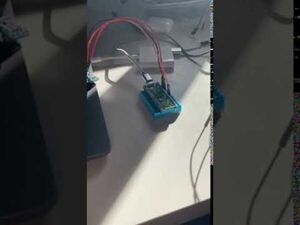
Pico Wake Word
"The TinyML Wake Word demo on the Raspberry Pi Pico. A less than $10 wake word! TinyML Wake-Word Detection on Raspberry Pi Pico This application implements the wake word example from Tensorflow Lite for Microcontrollers on the Raspberry Pi Pico. The wake word example shows how to run a 20 kB neural network that can detect 2 keywords, "yes" and "no". More information about this example is available on the Tensorflow Lite Micro examples folder. We use as input an electret microphone to detect the words "yes" or "no" and turn the on-device LED on and off in response." [...]

Ultrasonic Radar Can Detect Multiple Objects at Each Ping
"With a small modification of the ultrasonic sensor module, this radar can detect multiple objects at each ping. This radar can detect objects located at distances between 2 cm and 1 meter and displays the value of distance to the object. The object detection is performed inside an angle of 180 degrees. The motion sensor that covers this angle uses a stepper motor. Data are presented on a PC monitor, the motor movement being synchronized with the browsing of the radar screen. With a small modification of the ultrasonic sensor module, this radar is capable of detecting multiple objects with each ping, which means that it can also detect an object behind an obstacle." [...]
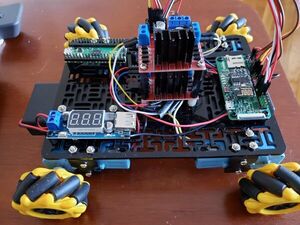
What Do I Build Next? A Pico-ATMegaZero BOT part 1 of 2
"I was looking for another BOT to build and then two new SBC's were announced or was it three SBC's? ATMegaZero ESP32-S2 and NOW, two/three Mecanum Robots based upon the newly released Raspberry Pi Pico RP2040, ATMegaZero, and ATMegaZero-ESP32-S2 micro computers. The ATMegaZero intrigued me because of its 40 pin GPIO Raspberry Pi type header. It all started with a couple of products from Adafruit: Adafruit's 48mm mecanum wheels " Right Mecanum Wheel - 48mm Diameter - TT Motor or Cross Axle ID: 4678 - $4.95 : Adafruit Industries, Unique & fun DIY electronics and kits ", " Left Mecanum Wheel - 48mm Diameter - TT Motor or Cross Axle ID: 4679 - $4.95 : Adafruit Industries, Unique & fun DIY electronics and kits " and metal geared DC Motors " TT Motor All-Metal Gearbox - 1:90 Gear Ratio ID: 3802 - $5.95 : Adafruit Industries, Unique & fun DIY electronics and kits " You can power these motors with 3VDC up to 6VDC. I was very much interested in the mecanum wheels cost, usability, and the performance of the metal geared DC motors. You can power these motors with 3VDC up to 6VDC." [...]
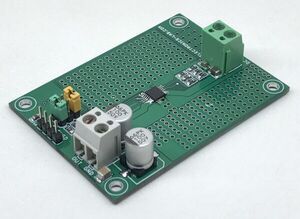
High Accuracy Adjustable Overvoltage and Overcurrent Protectors using MAX17561
"If you need safe power to run your project, then this circuit is a possible solution for you. This project provides protection to your system device against over-current, over-voltage, under-voltage, thermal overload, and reverse current flow control to the system device. Basically, this project can play a key role between the power supply and the sensitive system device, where the system device will be protected against the above conditions. When there is a change other than the set parameters the circuit will disable the output and go in retry mode, until the condition is as per the set value. The project is built using MAX17561 chip. Refer to the datasheet to get further information." [...]
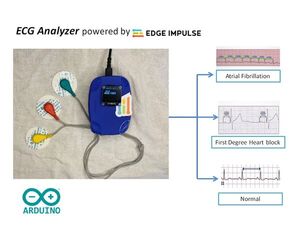
ECG Analyzer Powered by Edge Impulse
"A TinyML based Medical device powered by Edge Impulse to predict Atrial fibrillation, AV Block 1 and Normal ECG with >90%. In a past decade, the sudden heart attack deaths were increased tremendously. Particularly in a developing nations like India, apart from genetic and life styles, lack of medical resources in rural areas causes most of the fatality in heart attack. I have done a short survey on reasons for fatality on heart attack in a different countries. Some of the points are still common across the global level, which I have listed below. " [...]

Arduino based Alexa Home Automation| Alexa Arduino Project
"Alexa Home Automation using Arduino - Get complete instructions including the circuit diagram, PCB files if you want to make In this post, I will show you how you can set up an Alexa Home Automation using Arduino. I will be giving you complete instructions including the circuit diagram, PCB files if you want to make a PCB, and the codes. I will provide the link to everything in the description so that you can redesign the entire thing, customize it and then make your own version of it. " [...]
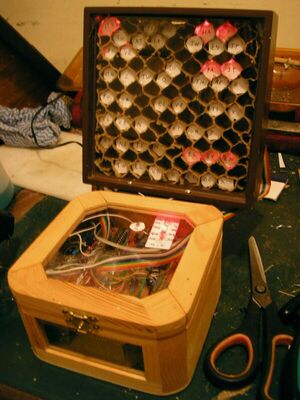
7400 Series Discrete Logic Word Clock
"Clocks are a problem for me, I keep designing them but I never seem to finish building my designs. I'm not really sure why. Maybe it's because I limit myself to using only TTL logic, or that my designs usually involve excessively complicated wiring or mechanics, or I guess maybe it's because I always wear a watch? Well anyway, these are some of the ideas that I've had over the years, many of which got as far as a completed circuit design and beginning construction: Brake Disc Clock Discrete Logic Meter Clock Randomly Ticking Clock (three designs for this, none built yet) Discrete Logic Whiteboard Clock VFD Clock (nothing too special about this one) Infinity Clock But this time I've finally come through with one, my own microcontroller-less take on "Word Clock" designs, which display the time in words by lighting up letters in a grid. " [...]
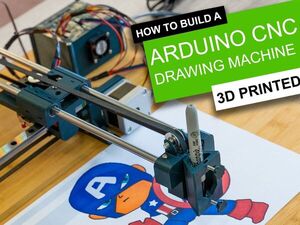
Simple 3D Printable Arduino CNC Drawing Machine
"3D Print your own high quality Arduino based CNC drawing machine. Simple, great quality & budget friendly. Use it to draw on almost anything How to make a simple and high quality 3D printable CNC drawing machine to draw on (almost) anything. I've always wanted a CNC machine and so has my partner. But they're just too expensive or too large for storing when not in use. So I designed this over a couple of months." [...]
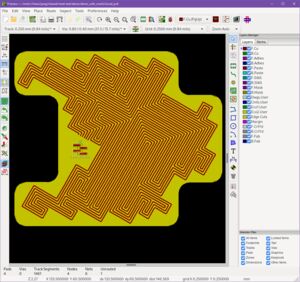
Kicad Mesh Plugin
"Tamper Detection Meshes Cryptography is at the foundation of our modern, networked world. From email to card payment infrastructure in brick and mortar stores, cryptographic keys secure almost every part of our digital lives againts cybercriminals or curious surveillance capitalists. Without cryptography, many of the things we routinely do in our lives such as paying for groceries with a credit card, messaging a friend on Signal or unlocking a car with its keyfob would not be possible. The security of all of these systems in its core lies on the secrecy of cryptographic keys. Systems differ in what kind of keys they use, how often these keys are replaced and the intricacies of the cryptographic operations these keys fit into but all have in common that their security relies on keeping the keys secret. In practice, this secrecy has been implemented in many different ways." [...]
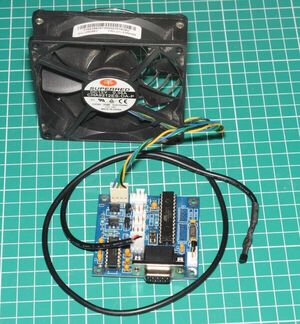
An(Other) Intelligent 4-Wire Fan Speed Controller
"The internet isn’t exactly short of fan speed controller projects – nor am I. I’ve probably got about four or five variants of these I’ve built over the years. Recently I’ve taken the time to round up the “best of” these into a single open-source friendly AVR based project. Historically it was based on PIC microcontrollers, using various expensive proprietary compilers – the main reason I’ve not released it to-date. The initial reason I embarked on this is because back 10 or so years ago when I first built one, PC motherboards lacked intelligent fan speed control, and if they did have it, it was limited to the point of being practically useless. The situation is a lot better these days, but the level of control sometimes desired isn’t a given. I still have quite a few of these in use for non PC scenarios, for example, inside networking equipment with excessively noisy overkill cooling arrangements." [...]

All about RS485 – How RS485 Works and How to Implement RS485 into Industrial Control Systems?
"In short, RS485 is a standard defining the electrical characteristics of serial lines for use in serial communications systems. It is essentially a form of serial communication. It may sound complicated for those who don’t know what is serial communication, so here’s an explanation. What is Serial Communication? Serial communication is a way to send data. It is like the Universal Serial Bus (USB) or ethernet that we can find in many of our modern computers." [...]
Secção Videos
Videos interessantes.
That's all Folks!



